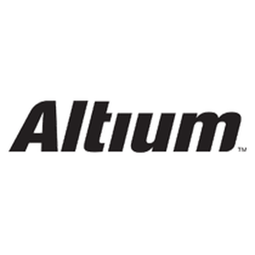Technology Category
- Processors & Edge Intelligence - Microcontrollers & Printed Circuit Boards
- Sensors - Autonomous Driving Sensors
Applicable Industries
- Electronics
- Equipment & Machinery
Applicable Functions
- Product Research & Development
Use Cases
- Time Sensitive Networking
- Virtual Prototyping & Product Testing
Services
- Hardware Design & Engineering Services
- Testing & Certification
About The Customer
Joe Grand is a computer engineer who has been involved with computers and electronics since he was seven years old. He began building projects out of Popular Electronics magazine and hand-etched his first circuit board when he was 13. Joe went on to earn a degree in computer engineering before founding his own company, Grand Idea Studio, a product design, development, and licensing firm that specializes in creating consumer and household devices, and modules for electronics hobbyists. In 2008, he was approached by the Discovery Channel to co-host and engineer a new show, Prototype This, which involved creating unique and novel prototypes for each episode.
The Challenge
Joe Grand, a renowned computer engineer and founder of Grand Idea Studio, was approached by the Discovery Channel in 2008 to co-host and engineer a new show, Prototype This. The show involved a team of engineers creating unique and novel prototypes for each episode, requiring skills in mechanics, electronics, materials science, and software engineering. However, the production schedules and timelines of the TV show often trumped the more thoughtful engineering processes required to design and build complex products. Most episodes were allotted only two weeks from concept to finale, with much of the team’s time spent in front of cameras, traveling, or doing interviews. As a result, Joe typically had just a few days to complete the electronics portion of the project, going from hand-built breadboard to final-ready circuit board in a matter of days.
The Solution
To meet the demanding timelines of the TV show, Joe turned to Altium Designer, a professional design suite that he was already familiar with. Altium Designer is an easy-to-use tool that makes fast work of designing both simple and complex circuit boards. It was chosen for its speed, dependability, and fully unified, efficient system that ensures data is synchronized between design domains. This allowed Joe to switch back and forth between schematic and PCB views, knowing that changes made would be reflected in all levels of design. The integrated design features of Altium Designer helped Joe create his systems quickly and reliably, removing the potential for error and ensuring that the designs would work right off the bat.
Operational Impact
Quantitative Benefit

Case Study missing?
Start adding your own!
Register with your work email and create a new case study profile for your business.
Related Case Studies.

Case Study
Smart Water Filtration Systems
Before working with Ayla Networks, Ozner was already using cloud connectivity to identify and solve water-filtration system malfunctions as well as to monitor filter cartridges for replacements.But, in June 2015, Ozner executives talked with Ayla about how the company might further improve its water systems with IoT technology. They liked what they heard from Ayla, but the executives needed to be sure that Ayla’s Agile IoT Platform provided the security and reliability Ozner required.

Case Study
IoT enabled Fleet Management with MindSphere
In view of growing competition, Gämmerler had a strong need to remain competitive via process optimization, reliability and gentle handling of printed products, even at highest press speeds. In addition, a digitalization initiative also included developing a key differentiation via data-driven services offers.

Case Study
Predictive Maintenance for Industrial Chillers
For global leaders in the industrial chiller manufacturing, reliability of the entire production process is of the utmost importance. Chillers are refrigeration systems that produce ice water to provide cooling for a process or industrial application. One of those leaders sought a way to respond to asset performance issues, even before they occur. The intelligence to guarantee maximum reliability of cooling devices is embedded (pre-alarming). A pre-alarming phase means that the cooling device still works, but symptoms may appear, telling manufacturers that a failure is likely to occur in the near future. Chillers who are not internet connected at that moment, provide little insight in this pre-alarming phase.

Case Study
Remote Temperature Monitoring of Perishable Goods Saves Money
RMONI was facing temperature monitoring challenges in a cold chain business. A cold chain must be established and maintained to ensure goods have been properly refrigerated during every step of the process, making temperature monitoring a critical business function. Manual registration practice can be very costly, labor intensive and prone to mistakes.

Case Study
Premium Appliance Producer Innovates with Internet of Everything
Sub-Zero faced the largest product launch in the company’s history:It wanted to launch 60 new products as scheduled while simultaneously opening a new “greenfield” production facility, yet still adhering to stringent quality requirements and manage issues from new supply-chain partners. A the same time, it wanted to increase staff productivity time and collaboration while reducing travel and costs.








